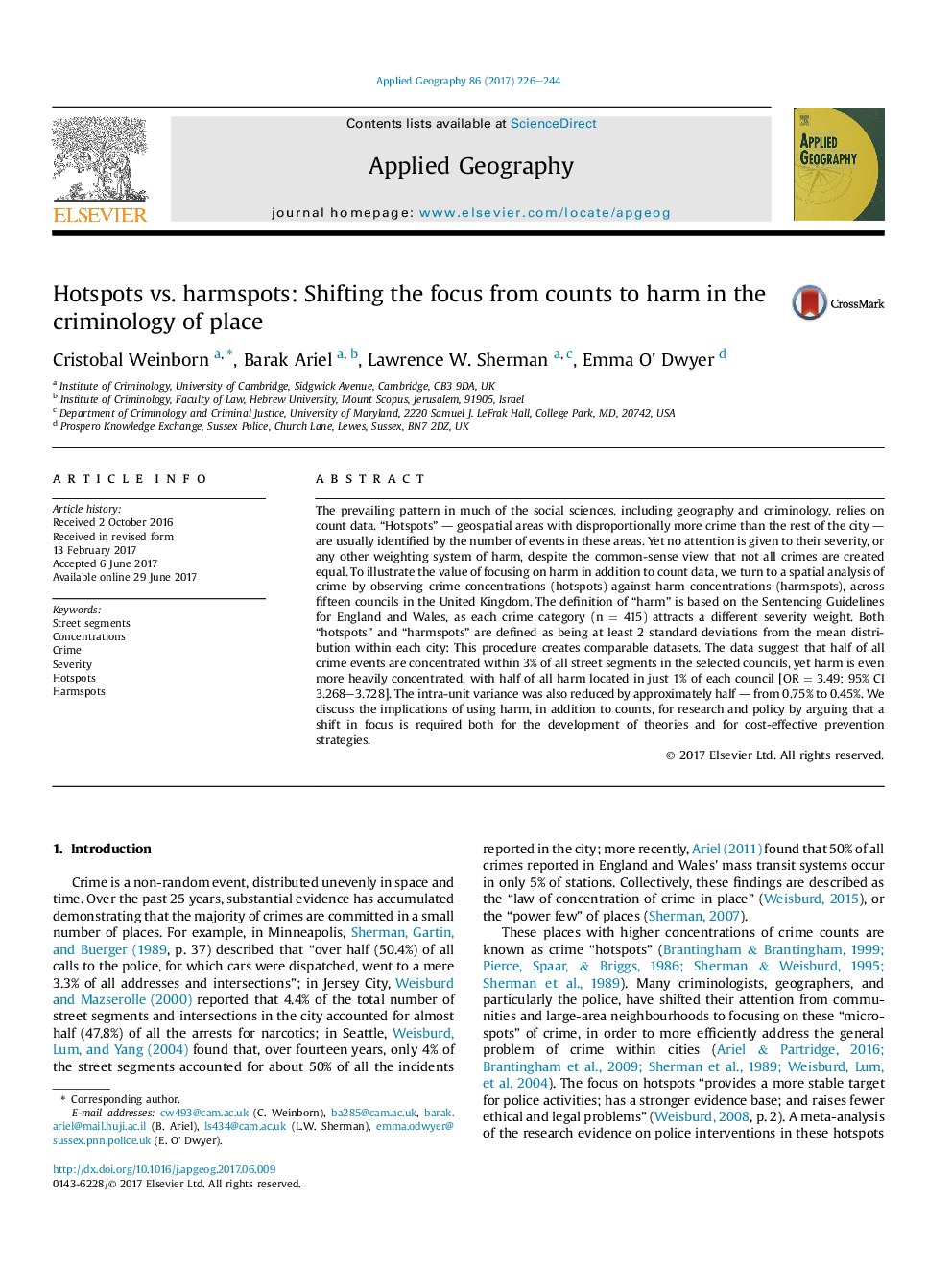| Article ID | Journal | Published Year | Pages | File Type |
|---|---|---|---|---|
| 6458335 | Applied Geography | 2017 | 19 Pages |
â¢Spatial analysis is used to identify problematic locations by focusing on harm (harmspots) and crime count data (hotspots).â¢Harm is three times more condensed in space than crime counts.â¢Only 24.71% hotspots and harmspots are located in the same areas.â¢Specific locations which concentrate both hotspots and harmspots represent the most problematic places within any city.â¢The implications of using harm, in addition to counts, for research and policy are discussed.
The prevailing pattern in much of the social sciences, including geography and criminology, relies on count data. “Hotspots” - geospatial areas with disproportionally more crime than the rest of the city - are usually identified by the number of events in these areas. Yet no attention is given to their severity, or any other weighting system of harm, despite the common-sense view that not all crimes are created equal. To illustrate the value of focusing on harm in addition to count data, we turn to a spatial analysis of crime by observing crime concentrations (hotspots) against harm concentrations (harmspots), across fifteen councils in the United Kingdom. The definition of “harm” is based on the Sentencing Guidelines for England and Wales, as each crime category (n = 415) attracts a different severity weight. Both “hotspots” and “harmspots” are defined as being at least 2 standard deviations from the mean distribution within each city: This procedure creates comparable datasets. The data suggest that half of all crime events are concentrated within 3% of all street segments in the selected councils, yet harm is even more heavily concentrated, with half of all harm located in just 1% of each council [OR = 3.49; 95% CI 3.268-3.728]. The intra-unit variance was also reduced by approximately half - from 0.75% to 0.45%. We discuss the implications of using harm, in addition to counts, for research and policy by arguing that a shift in focus is required both for the development of theories and for cost-effective prevention strategies.
